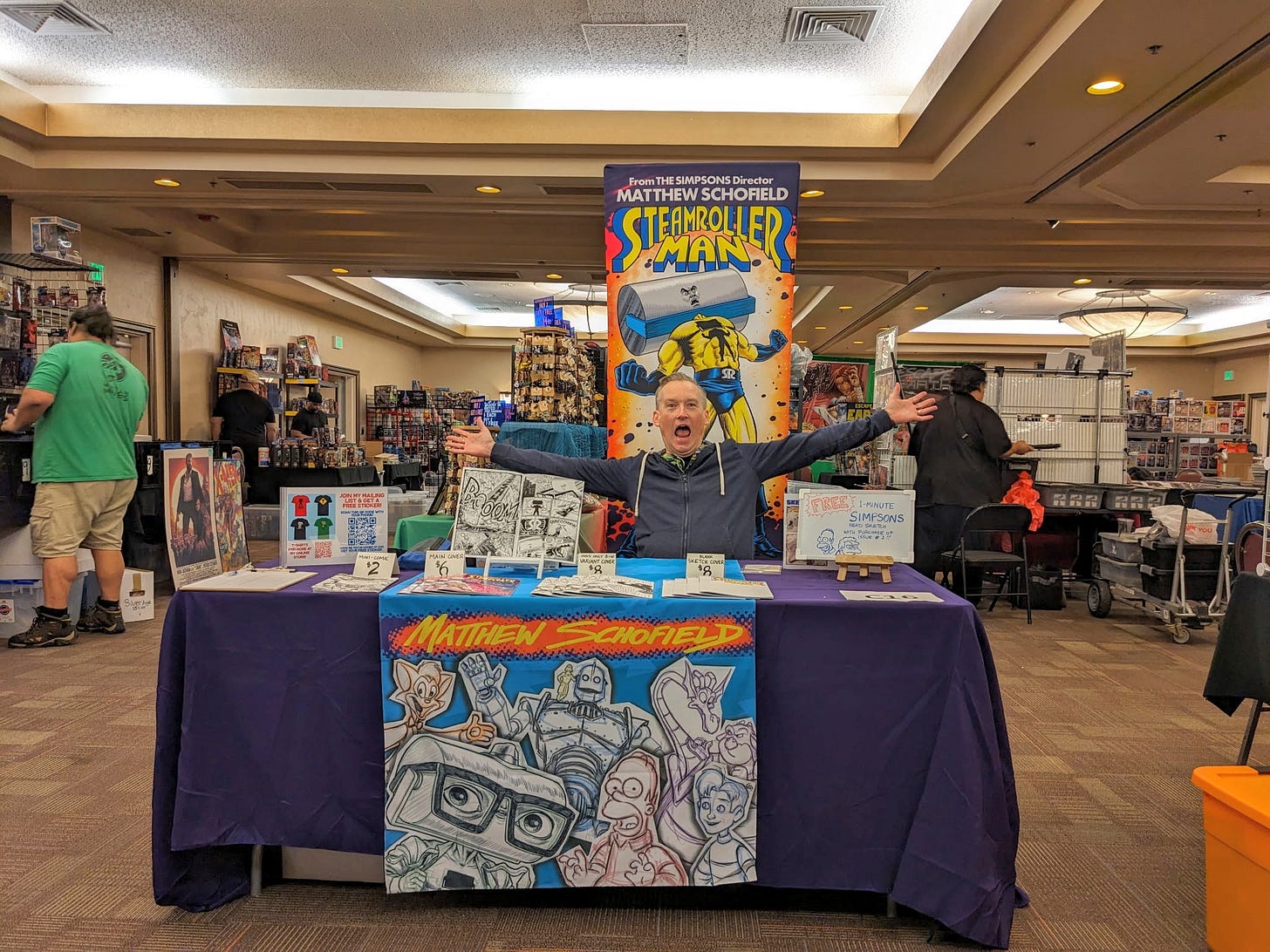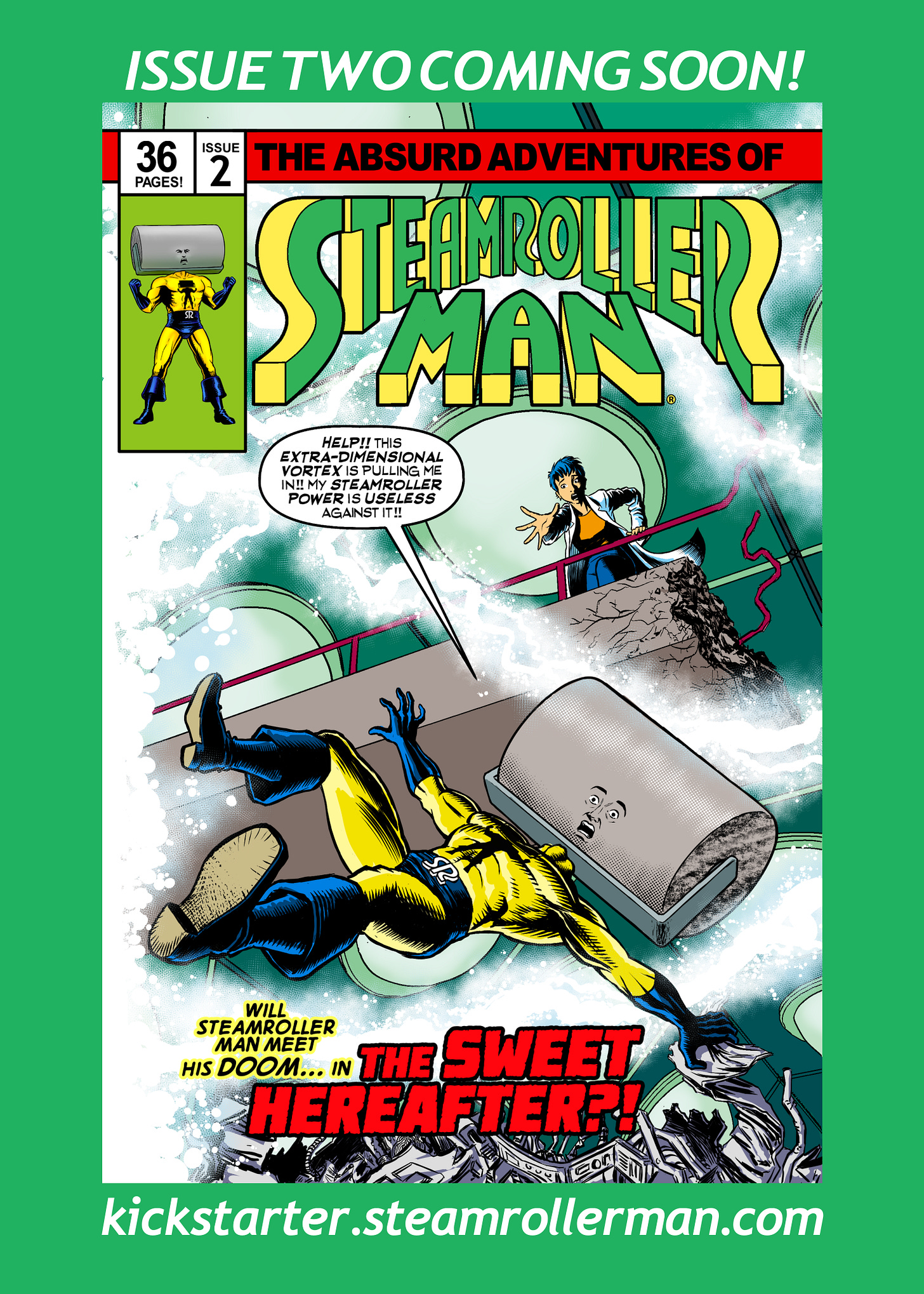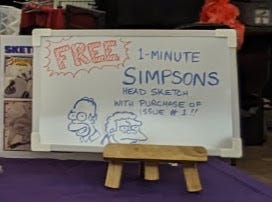5 Lessons I Learned From My First Time Tabling At a Comic Convention
Maybe They'll Answer Some Questions You Have!
Hi there!
I’m still on a high from my first experience of tabling at a convention a couple of weekends ago! After my last post, I was asked whether I could list some mistakes to avoid when doing a convention as a first-timer. I don’t see anything I did as a “mistake”, per se; I generally had a great time, and I think I prepared well enough beforehand that there were no instances of things going horribly wrong.
In response to the question, though, I’m writing this post about some things I learned from the experience. Before I start, though…
LESSON #1: Cash Is NOT King!
In the weeks leading up to the event, my son suggested that I should buy one of those little credit card reader gadgets that connects to your phone. I said “naahhh, she’ll be right, mate” (as is my duty, as an Australian). I was planning to bring some cash to make change, and figured I could just use Venmo on my phone for non-cash purchases.
It turned out my son was right.
SO right. A large majority of my customers didn’t bring any cash to the show, and the free WiFi in the building was slow, so using Venmo was a challenge. I had to open the app on my phone, and the customer had to open it on theirs, then wait… wait… wait… It felt awkward taking up people’s time.
So as soon as I got home, I ordered a card reader. The app that connects to it was really easy to set up and I’m looking forward to putting it into action at my next con!
LESSON #2: Have A Preview of Your Next Thing!
Even though I only had a single issue and a mini-comic for sale, almost every customer asked two questions: “Is this a self-contained story?” and when I answered that it was part one of a continuing story, they asked “when’s the next one coming out?” To have people show that level of interest in my comic was a great feeling!
Since I’m still putting my next campaign together, with no launch date set as yet, I had to sheepishly say “Oh, I’ll be doing a Kickstarter for the next issue… well… sometime this year”. Since I hadn’t expected the question, I hadn’t really prepared a better answer. I got the impression that not yet having a complete story made it slightly less appealing to potential buyers.
I realized that for any conventions I do between now and the campaign launch date, I needed to print a postcard with the issue #2 cover, and a QR code that sends people to my Kickstarter Pre-Launch page so they can sign up to be notified when it launches. Here’s the design I whipped up (the QR code will be on the back):
It’s a tangible, physical sign that “hey, this is really happening, there WILL be a second issue”. In terms of psychological impact, I think this is better than a verbal promise, and will hopefully be a stronger and more memorable reminder.
And if that wasn’t a big enough hint, YOU should sign up at my Pre-Launch page, too!
LESSON #3: A Banner Is Definitely Worth The Money!
When I first started planning for conventions, I knew I wanted a banner, something that would catch the eyes of passersby.
As I started to think about a banner design, I wasn’t sure if I should put anything related to my animation career on it, or only confine it to images of Steamroller Man. From what I’d researched online, there were two schools of thought. One was “Promote Yourself” - based on the thinking that a creator may work on more than one comic and should promote themselves rather than one part of their career. The other was “Promote Your Comic” which I think is self-explanatory. Since I was new to the comic field, and at this point I was there to sell and promote the sole comic property I’ve worked on, I was leaning towards just putting Steamroller Man on the banner.
I decided to ask a friend of mine who has published his own comics, done conventions, and also happens to be a very savvy marketer, what he would do. (His name is Brian Winkeler, and you can follow him on Bluesky or here on Substack! Hi Brian!)
I don’t remember his exact words, but Brian said something along the lines of “use every weapon at your disposal” to get people to stop at my table. In my case, a large part of that arsenal was the stuff I’d worked on before I started Steamroller Man. My animation resumé was something unique to me, and the stuff I’ve worked on has very high visual recognition. I decided to follow Brian’s advice and lean into the career stuff, and it was definitely the right decision!
A LOT of people - almost all of them, in fact - saw my banner, or saw my table runner, and stopped at my table to talk about the Simpsons, and the films I’d worked on. This was a natural icebreaker, and allowed me to segue into talking about how I started the comic.
BUT there’s a caveat to this:
LESSON #4: If You Split The Customer’s Focus Between Your Fan Art and Your Own Creation, Be Prepared…
This one takes a little explaining. As I said, I decided to use my animation credits on my banner and table runner as a way to attract attention. But the day of the con, I had the idea to put a little sign on my table that I thought would encourage people to buy my comic:
Essentially, I was offering a quick, on-the-spot fan-art sketch for free, as long as someone bought a copy.
This seemed to work great… at first.
However, as the day progressed I got the impression that a lot of people really just wanted a Simpsons sketch, and only bought the comic in order to get one. It led to some very strange interactions and somewhat bizarre requests. People started to try and modify the offer, wanting me to sign and draw on stuff other than the sketch cards I was using, and offered to just pay me for the sketch outright without getting a comic. It started to feel awkward.
I had split the customers’ attention and it had spiralled to a point where it felt like my presence at the con was no longer about the comic I was there to promote and sell.
At my next convention, I’m not going to offer Simpsons sketches at all, just to compare the experience.
LESSON #5: Don’t Be Afraid of Selling Your Stuff - It’s Why You Have A Table!
In my last post, I mentioned that my son was my “booth buddy” at this convention. Having him beside me as I was talking to people meant that we could do a little debrief after each conversation I had. He pointed out a few instances where I could have moved the conversation quite naturally from answering questions about my career into telling the potential customer about my comic.
He’s never seen Glengarry Glen Ross, but it seems he’s already got the Always Be Closing mindset!
Now, don’t get me wrong, I’m not a fan of the “hard sell” as a customer. I hate it! There’s a certain browse-from-a-distance-but-don’t-make-eye-contact behavior that I adopt whenever I’m strolling through a small press area at a convention, lest I get dragged into an unwanted “hey can I tell you about my comic?” sales pitch. From behind my first convention table, it was amusing to observe the same behavior in so many other people, as they passed my table! I don’t ever want to be That Guy, but I do think there’s something to what my son was saying.
I paid for a table at the convention in order to sell my comic books. If someone has already started a conversation with me, attempting to steer that conversation towards making a sale, in a non-aggressive, conversational way, is not a bad thing.
I’ve never worked in sales, so this is one more skill that is outside my comfort zone! I’ll have to work on it!
What a journey Steamroller Man is leading me on!
All I can do is keep rolling! See you next time!
Matt









So glad to hear everything went so well and you only experienced occasional light awkwardness. Great stuff!
This was a great read, fantastic insights!